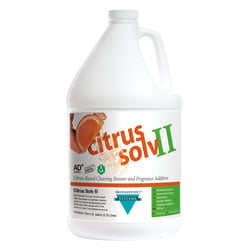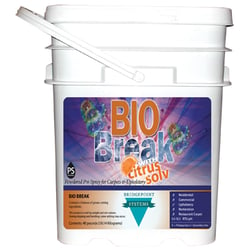-1.jpg?width=1640&name=My%20Post%20(36)-1.jpg)
The three primary building blocks of cleaning formulations are solvents, surfactants, and builders (acidic or alkaline). All solvents are in liquid form as are most surfactants. Most alkaline builders will be in powdered form, and acidic builders can be either powdered or liquid.
Liquids go into liquids easier than into powders, and powders go into powders easier than into liquids. Both liquid and powder formulas have their own limitations and advantages.
Liquids
-1.jpg?width=1640&name=My%20Post%20(37)-1.jpg)
The advantage of liquids is that they dissolve easily into water except for some solvent-based products. Most of the raw material will dissolve into water.
Some builders are more soluble in water than others. For example, one form of phosphate is limited to 10 percent of its weight being dissolvable in water; whereas, as much as 50 percent of another form of phosphate’s weight might be dissolvable in water. However, ten percent generally is the limit, with a few exceptions.
Some solvents are water soluble while others are not. D-limonene will not go into water easily, which is why D-limonene boosters are distinct products.
There is a limit to the number of surfactants that can be dissolved into water. Therefore, when all three types of ingredients are used, the amounts available for use are diminished. Excessive raw material in a formula results in cloudiness or separation, especially as heat rises.
Powders
-1.jpg?width=1640&name=My%20Post%20(38)-1.jpg)
The advantage of powders is they are generally 100 percent active. There is a limit to the amount of liquid that can be absorbed into powders, with 10 percent liquid into a formula being the general limit. All powders need to be dissolved into water to become usable cleaners. However, not all powdered raw materials readily dissolve into water, which means a few minutes of mixing might be necessary to create a solution.
A powdered product requires the bulk of the cleaning to be done with builders. The most balanced and alkaline powdered formula can be 90 percent alkaline powders, five percent solvent, and five percent surfactant; whereas an alkaline liquid formula could have 10 percent alkaline, 10 percent solvent, and 10 percent surfactant… in water, of course.
Powdered formulas are limited to the percent of liquid that a powder will absorb. Some powders absorb liquids, and some do not. The percent of liquid used is determined by the total absorbency of the powders in the formula. Excessive liquid results in the powder “bricking.” Some of this is caking that increases as the product ages.
Powdered formulas are primarily presprays or rinses in which alkalinity and free rinsing are the most desirable features. The concentration of the product limits packaging and shipping costs for the most used product type. These can also be made in liquid form at a lower concentration level. For every powdered version, there is a complimentary liquid version.
Specialty products are typically not made in powdered form based on the nature of the raw material and the function of the product. Encapsulants, deodorizers, bacteria, fragrances, protectors, ready-to-use spotters, and other specialty products will not be found in powdered form. This is the reason why powders represent less than 10 percent of individual products provided by major manufacturers to the professional cleaning industry. However, based on the frequent usage of powders in typical cleaning situations, it may represent up to 30 percent of the units sold.
Some powdered versions on the market will readily dissolve, making them easier to mix than typical powders. Shelf life is not a concern for powders unless you leave the lid off in a humid environment. A high-alkaline powder is safer to handle than a comparable liquid as it takes water to create the hazard.
A jar of powdered prespray (100 percent solids) will make 25 to 50 ready-to-use gallons, while a comparable liquid prespray (20 percent solids) will make from five to 10 ready-to-use gallons at equivalent strength. Concentrated liquid presprays with equal amounts of solvents, surfactants, and builders will make from 16 to 32 ready-to-use gallons of prespray.
Powders also save money since the concentration level reduces packaging and shipping costs.
While both liquid and powdered cleaning formulations have their merits and disadvantages over the other, powdered formulations generally have more advantages when available.
In short, my recommendation is to use well formulated, powdered presprays and rinses whenever possible.
Featured Products

Bridgepoint Systems, Cleaning Booster, Citrus Solv II, 1 Gallon

Bridgepoint Systems, Carpet Cleaning Prespray, Bio Break w/Citrus Solv, 36 lbs

Bridgepoint Systems, Pet Stain/Odor Neutralizer PetZone, 7 lbs
